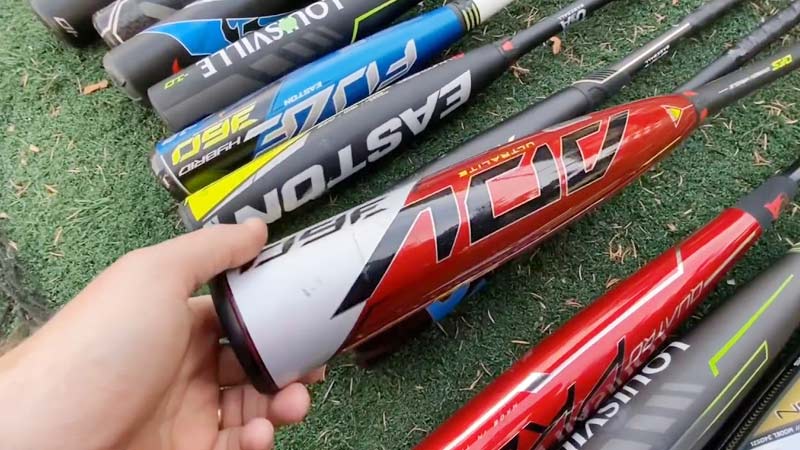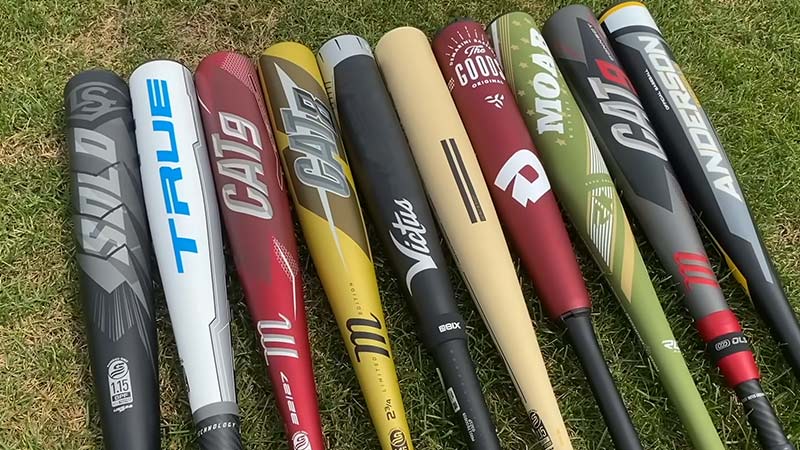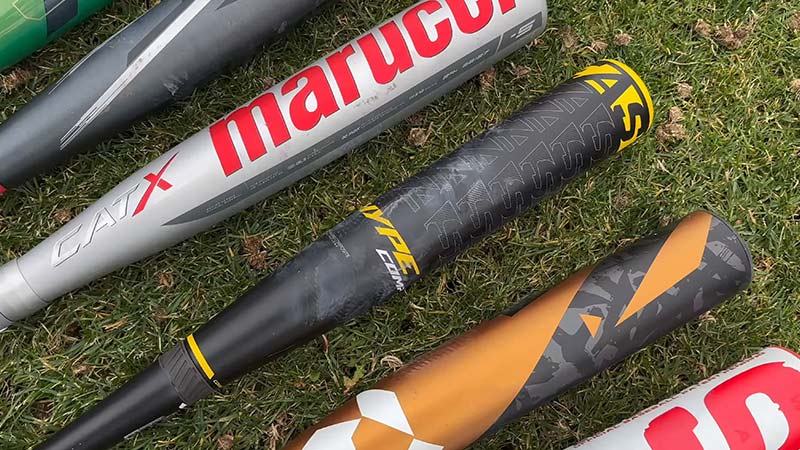In USSSA baseball, adherence to bat rules is crucial for fair competition. Understanding the regulations surrounding big-barrel and small-barrel bats, drop weight restrictions, and the importance of using approved bats ensures a level playing field.
These guidelines promote fair play, and safety, and uphold the integrity of the game. So, if you are not aware of the basics of USSSA bat rules in baseball, check this blog till the end.
This blog aims to cover all the facts regarding the rules. It will be helpful for beginners and baseball spectators who need to understand the rule to enjoy the game.
Big Barrel Bats
Big barrel bats are an essential equipment component in USSSA baseball, and understanding the regulations surrounding them is crucial for players, coaches, and teams.
These bats, known for their larger barrel diameter, play a significant role in enhancing hitting performance.
Characteristics of Big Barrel Bats
Big barrel bats are characterized by their larger barrel diameter, typically measuring either 2 5/8 inches or 2 3/4 inches.
This increased barrel size provides players with a larger sweet spot, facilitating enhanced contact and power during hitting. The design of big barrel bats aims to maximize performance and optimize offensive capabilities.
Usssa Requirements for Big Barrel Bats
To ensure fair play and safety, USSSA has established specific requirements for the usage of big barrel bats. These requirements are as follows:
New Permanent USSSA Mark on the Taper
Big barrel bats must feature the new permanent USSSA mark on the taper. This mark serves as a visual indicator that the bat has met the necessary standards and regulations set forth by USSSA.
Qualified BBCOR Bats
Alternatively, big barrel bats can also be qualified BBCOR bats. BBCOR stands for “Batted Ball Coefficient of Restitution,” and these bats meet certain performance standards to prevent excessive ball speed off the bat. BBCOR bats are commonly used in high school and collegiate baseball.
Wood Bats
Wood bats, which offer a traditional and classic feel, are also permitted for use in USSSA baseball. These bats are typically made from solid wood, such as maple, ash, or birch.
Coach Pitch Bats in the Big Barrel Bat Rules
It is important to note that coach pitch bats are also included in the big-barrel bat rules. Coach pitch bats, despite their smaller barrel diameter, must meet the same USSSA requirements as other big barrel bats. This ensures a consistent standard across all levels of play.
Additional Requirements for 15u and Above
For players in the 15U age division and above, there are additional requirements that must be met when using big barrel bats. These requirements are as follows:
NHSF Approval
In addition to the USSSA mark and qualifications, big barrel bats used by 15U and above must have approval from the National Federation of State High School Associations (NHSF). This approval ensures compliance with high school baseball standards.
BBCOR Certification Mark
Alongside NHSF approval, big barrel bats used by 15U and above must bear the appropriate BBCOR certification mark. This mark indicates that the bat meets the specific performance regulations outlined for high school and collegiate baseball.
Big barrel bats are subject to USSSA regulations, which aim to promote fair play and safety in youth baseball. By adhering to these requirements, players and teams can compete on an even playing field while enjoying the benefits of these specialized bats.
Small Barrel Bats and Their Regulations

In addition to big barrel bats, small barrel bats play a significant role in USSSA baseball. These bats, characterized by their smaller barrel diameter, are commonly used in specific age divisions. The regulations surrounding small barrel bats are essential for players and coaches to ensure compliance and fair play.
In this section, we will explore the definition and characteristics of small barrel bats, discuss the USSSA requirements for their usage, and emphasize the importance of bats being manufactured by approved USSSA bat licensees.
Characteristics of Small Barrel Bats
Small barrel bats are characterized by their smaller barrel diameter, typically measuring 2 1/4 inches or less. Unlike big barrel bats, which provide a larger sweet spot for hitting, small barrel bats offer a more compact hitting surface.
These bats are commonly used in certain age divisions, providing players with a bat size appropriate for their skill level and physical capabilities.
Usssa Requirements for Small Barrel Bats
USSSA has established specific requirements for the usage of small barrel bats to ensure fair play and safety. The requirements for small barrel bats are as follows:
New Permanent USSSA Mark on the Taper
Similar to big barrel bats, small barrel bats must feature the new permanent USSSA mark on the taper. This mark serves as a visual indicator that the bat has met the necessary standards and regulations set forth by USSSA.
Wood Bats
Unlike big barrel bats, which can be qualified BBCOR bats, small barrel bats are limited to wood bats. Wood bats offer a traditional and authentic baseball experience, requiring players to rely on their skill and technique for optimal performance.
Bats Being Manufactured by Approved Usssa Bat Licensees
To ensure compliance with USSSA regulations, it is crucial that small barrel bats are manufactured by approved USSSA bat licensees. Approved licensees have undergone the necessary testing and certification processes to meet the USSSA standards.
This ensures that the bats are constructed using appropriate materials and manufacturing techniques, enhancing player safety and maintaining a level playing field.
Small barrel bats, with their smaller barrel diameter, have specific regulations set by USSSA to ensure fair play and safety in youth baseball.
Drop Weight Restrictions
Drop weight is an important aspect to consider when selecting a bat for USSSA baseball. It refers to the numerical difference between the bat’s length and weight. The significance of drop weight and the specific restrictions imposed by USSSA for different age divisions is crucial for players, coaches, and teams.
Significance of Drop Weight in Bats
Drop weight is a numerical value that represents the difference between a bat’s length and weight. It is usually expressed as a negative number.
For example, a bat with a length of 30 inches and a weight of 20 ounces would have a drop weight of -10. The drop weight indicates the bat’s overall weight distribution and swing feel.
The significance of drop weight lies in its impact on a player’s swing speed and power. Bats with a higher negative drop weight (e.g., -10) tend to be lighter and allow for faster swing speeds, making them suitable for younger players who may have less physical strength.
On the other hand, bats with a lower negative drop weight (e.g., -5) are relatively heavier and can generate more power, often preferred by older, stronger players.
Usssa Drop Weight Restrictions for Different Age Divisions
USSSA has established specific drop weight restrictions to ensure fairness and safety across different age divisions. The drop weight restrictions for various age divisions are as follows:
- -10, -8, or -5 for 14U and below: For players in the 14U age division and below, USSSA allows bats with a maximum drop weight of -10, -8, or -5. This range provides options that cater to players of varying skill levels and physical capabilities, allowing them to find a bat that suits their swing style.
- -8 or -5 for 13U: In the 13U age division, USSSA restricts the maximum drop weight to -8 or -5. This ensures that younger players transitioning to higher levels of play are using bats that align with their developing skills and strength.
- -5 for 14U (starting from January 1, 2020): Starting from January 1, 2020, USSSA introduced a new drop weight restriction specifically for the 14U age division. Players in this age group are now limited to bats with a maximum drop weight of -5. This adjustment aims to align with the changing dynamics of the game and maintain a balanced competitive environment.
By adhering to these drop weight restrictions, players can choose bats that are suitable for their age and skill level, promoting fair play and optimizing performance.
Drop weight plays a significant role in bat selection for USSSA baseball. Understanding its definition and significance allows players and coaches to make informed decisions when choosing bats.
The USSSA drop weight restrictions for different age divisions ensure fairness and safety on the field, while also considering the developmental needs of players at various stages of their baseball journey.
Penalties and Prohibited Bats

USSSA has established regulations regarding bat usage in order to maintain fair play and ensure the integrity of the game.
It is essential for players and coaches to be aware of the consequences of using non-compliant bats and the importance of checking the USSSA withdrawn/non-compliant bats list.
In this section, we will discuss the penalties associated with using non-compliant bats, emphasize the significance of staying updated with the list, and highlight the importance of fair play and maintaining the integrity of USSSA-sanctioned play.
Consequences of Using Non-compliant Bats
Using bats that do not comply with USSSA regulations can result in penalties and consequences during USSSA-sanctioned play. If a player is found using a bat that fails to meet the required standards, they may face disqualification from the game or tournament.
In addition, the team could be subject to penalties, such as forfeiting the game or facing suspension from future USSSA events.
These consequences are in place to uphold the fairness and integrity of the game, ensuring that all players have an equal opportunity to compete within the established rules.
Checking the Usssa Withdrawn/non-compliant Bats List
USSSA maintains a withdrawn/non-compliant bats list that includes bats that have been deemed ineligible for use in USSSA-sanctioned play. It is crucial for players and coaches to regularly check this list to ensure that their bats are compliant and permitted for use.
The list is updated periodically as new information becomes available, including bats that have been identified as not meeting the required standards or have been voluntarily withdrawn by manufacturers.
Checking the list helps prevent the unintentional use of prohibited bats, minimizing the risk of penalties and ensuring compliance with USSSA regulations.
Ensuring Fair Play and Maintaining the Integrity
The enforcement of bat regulations and the adherence to USSSA guidelines are paramount in ensuring fair play and maintaining the integrity of USSSA-sanctioned baseball.
By following the established rules and using compliant bats, all players have an equal opportunity to compete on a level playing field.
The regulations aim to prevent any unfair advantage gained through equipment, promoting fair competition and preserving the integrity of the game.
Upholding these principles not only creates a fair environment for all participants but also fosters sportsmanship, respect, and the true spirit of baseball.
Using non-compliant bats in USSSA-sanctioned play can result in penalties and consequences. Checking the USSSA withdrawn/non-compliant bats list is essential to ensure compliance and avoid unintentional use of prohibited bats.
Usssa Bat Regulations by Age Division
| Age Division | Big Barrel Bats | Small Barrel Bats | Drop Weight Restrictions |
| 14U and below | USSSA mark on taper, Qualified BBCOR bats, or Wood bats | USSSA mark on the taper or Wood bats | Maximum -10, -8, or -5 |
| 13U | USSSA mark on taper, Qualified BBCOR bats, or Wood bats | USSSA mark on the taper or Wood bats | Maximum -8 or -5 |
| 14U (from Jan 1, 2020) | USSSA mark on taper, Qualified BBCOR bats, or Wood bats | USSSA mark on the taper or Wood bats | Maximum -5 |
| 15U and above | USSSA mark on taper, Qualified BBCOR bats, or Wood bats, NHSF approval, and BBCOR certification mark | Not Applicable | Not Applicable |
FAQs
Can a player in the 14U age division use a big barrel bat with a drop weight of -10?
Yes, players in the 14U age division are allowed to use big barrel bats with a drop weight of -10, along with drop weights of -8 or -5. The USSSA regulations provide flexibility in drop weight options for this age group.
Can a player in the 13U age division use a big barrel bat with a drop weight of -10?
No, players in the 13U age division are restricted to using big barrel bats with a maximum drop weight of -8 or -5. Bats with a drop weight of -10 are not permitted in this age division according to USSSA rules.
Are there any restrictions on the length of the bat according to USSSA regulations?
USSSA bat rules primarily focus on the barrel diameter, the presence of the USSSA mark, the type of bat (big barrel or small barrel), and the drop weight. USSSA does not impose specific restrictions on the length of the bat. However, it is always important to consider appropriate bat length based on the player’s size, strength, and hitting mechanics for optimal performance.
Can USSSA-approved bats be used in other baseball leagues or tournaments?
USSSA-approved bats are specifically designed to comply with USSSA regulations. While some leagues and tournaments may accept USSSA-approved bats, it is important to check the specific bat regulations of the respective league or tournament in which you are participating. Other organizations may have different bat rules and standards.
End Call
Acknowledgment of the USSSA bat rules is essential for fair and safe play in youth baseball. Compliance with regulations regarding big-barrel and small-barrel bats, drop weight restrictions, and the use of approved bats ensures a level playing field.
By upholding these standards, players, and teams can enjoy the game with integrity and sportsmanship. After this discussion, I can anticipate that you have no issues with this rule set.
Have a nice day.







